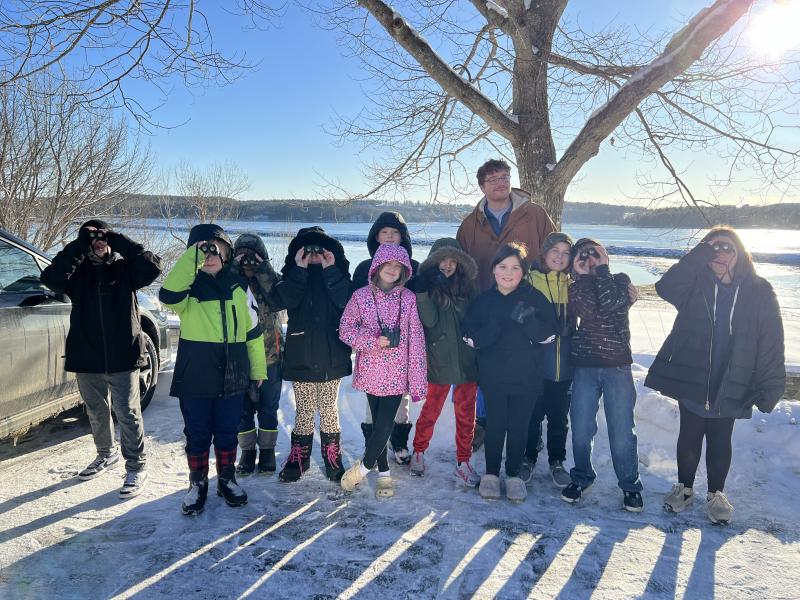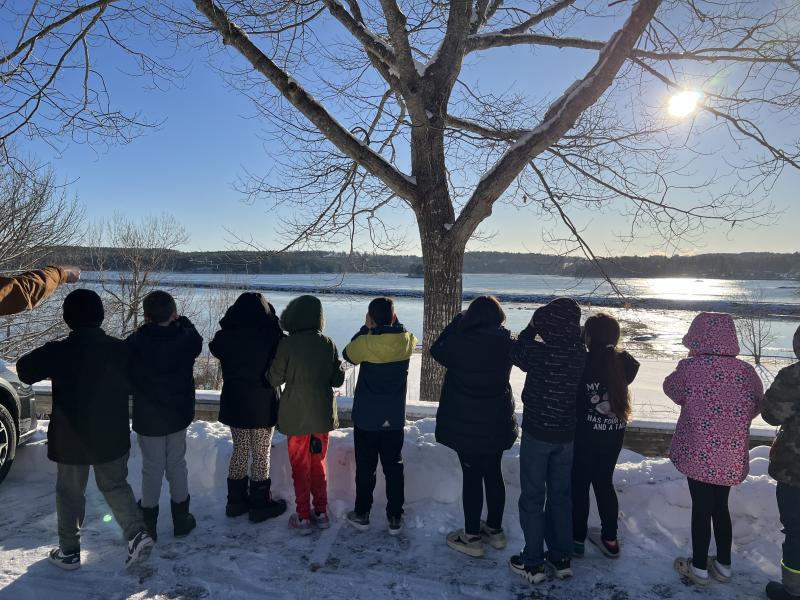WES students learn about Maine’s native birds
Fourth grade students in Kaden Pendleton's class at Wiscasset Elementary School are getting a bird's-eye view of Maine's native wildlife, thanks to a Maine Environmental Education Association (MEEA) grant. The $750 grant has equipped these young naturalists with essential tools for outdoor learning, including binoculars, nautical charts, and Birds of Maine field guides.
Standing on the banks of the Sheepscot River behind their school, students recently put their new equipment to use, participating in the annual Great Backyard Bird Count (GBBC). This global citizen science project, held each February, engages bird watchers of all ages in counting and documenting local bird populations, contributing valuable data to scientific research and conservation efforts.
"Watching the students discover and identify birds through their binoculars has been incredible," said Pendleton. "The MEEA grant has transformed our ability to study Maine's native species up close and in their natural habitat."
The class's participation in the Great Backyard Bird Count represents a perfect fusion of environmental education and hands-on learning. During the count, students learn to identify various bird species, understand their behaviors, and contribute to a worldwide database of bird populations. This citizen science initiative helps researchers track changes in bird distribution and abundance across the globe.
The project extends beyond basic bird identification. Students are also incorporating nautical charts into their studies, particularly during their ongoing puffin project. This interdisciplinary approach combines biology, geography, and environmental science, helping students understand the complex ecosystems that support Maine's diverse bird populations.
The new Birds of Maine field guides have become valuable classroom resources, allowing students to research and verify their observations. By comparing their real-world sightings with the detailed information in their guides, students are developing critical observation and research skills while building a deeper connection to their local environment.
Through initiatives like this, supported by MEEA's grant program, a new generation of environmental stewards is taking shape along the banks of the Sheepscot River. As these young birders continue their observations and studies, they're not just learning about native bird species, they're becoming active participants in wildlife conservation and environmental science.
For schools interested in similar initiatives, MEEA's grant program continues to support educators in bringing environmental education to life through hands-on learning experiences. More information about the Great Backyard Bird Count and how to participate can be found through the National Audubon Society and Cornell Lab of Ornithology.






























